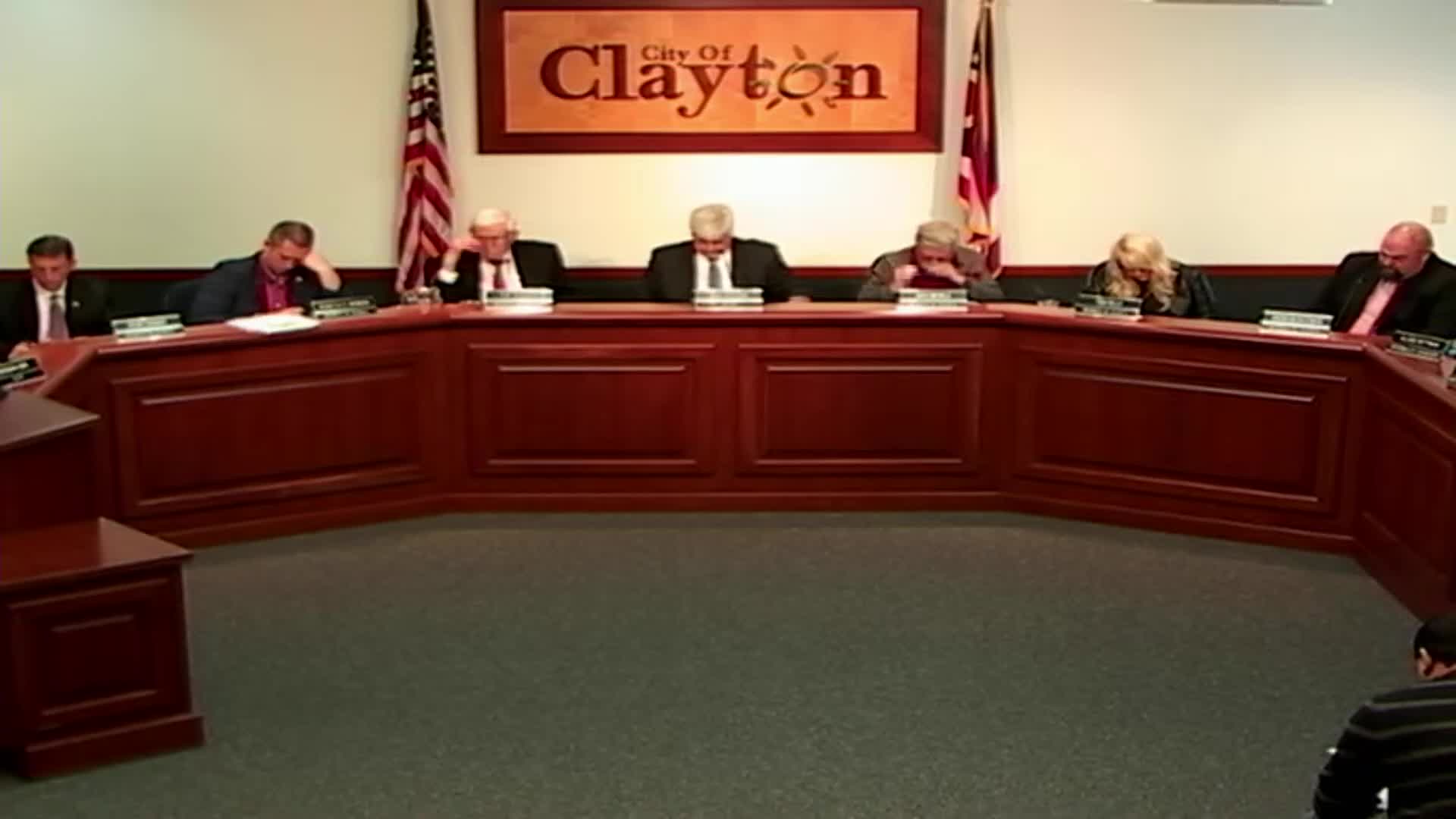Council approves multiple tax-increment financing districts after narrow amendment vote
November 21, 2025 | Clayton City Council, Clayton, Montgomery County, Ohio

This article was created by AI summarizing key points discussed. AI makes mistakes, so for full details and context, please refer to the video of the full meeting. Please report any errors so we can fix them. Report an error »

The Clayton City Council on Monday approved ordinances establishing three incentive districts tied to the Hunter's Path project and two additional districts tied to other developments, after brief public comment and council debate.
The most contested moment came when Council member Farmer moved to amend the three-district ordinance to cap developer reimbursement at $500,000 per district; Henning seconded the amendment. Farmer framed the motion as a limit on reimbursements: "I'd like to motion that we, have a compensation cap on each of those districts at 500,000," Farmer said. A roll-call vote on the amendment recorded Farmer and Henning voting yes and five other members voting no.
During public comment, resident Joe Plummer said he opposed the city’s use of TIFs, arguing they shift service costs onto current residents: "I don't think it's fair for me to pay for fire in place, street snow removal, leaf removal for these new developments," Plummer said. Developer Lance Oakes urged the council to consider the long-term economic benefit of new rooftops, saying commercial growth often follows housing: "People tend to spend money in close proximity to where they live," Oakes said.
Council moved the three-district ordinance to a final vote after the failed amendment. On the final roll call the ordinance passed 5–2 with Gorman, Merkel, Kelly, Bachman and Stevens voting in favor and Farmer and Henning voting against.
A separate ordinance creating two incentive districts later cleared council on a 5–2 vote as well. Both TIF ordinances cited authority under the Ohio Revised Code for creating such districts and establishing service-payment arrangements in lieu of real property taxation.
Why it matters: TIFs redirect future incremental property-tax revenue toward infrastructure and developer reimbursement rather than the general tax base. Supporters said incentives spur housing and commercial activity that benefit existing businesses and the broader city; opponents warned about shifting ongoing maintenance and service costs to current residents.
What’s next: The ordinances create the legal frameworks for incentive districts; implementing agreements, project plans, and any reimbursements will be finalized in subsequent staff and developer work. Council did not adopt the $500,000-per-district cap proposed by Farmer.
Votes and motions recorded in council minutes and the roll-call record supply the official outcome and will be reflected in the ordinance files.
The most contested moment came when Council member Farmer moved to amend the three-district ordinance to cap developer reimbursement at $500,000 per district; Henning seconded the amendment. Farmer framed the motion as a limit on reimbursements: "I'd like to motion that we, have a compensation cap on each of those districts at 500,000," Farmer said. A roll-call vote on the amendment recorded Farmer and Henning voting yes and five other members voting no.
During public comment, resident Joe Plummer said he opposed the city’s use of TIFs, arguing they shift service costs onto current residents: "I don't think it's fair for me to pay for fire in place, street snow removal, leaf removal for these new developments," Plummer said. Developer Lance Oakes urged the council to consider the long-term economic benefit of new rooftops, saying commercial growth often follows housing: "People tend to spend money in close proximity to where they live," Oakes said.
Council moved the three-district ordinance to a final vote after the failed amendment. On the final roll call the ordinance passed 5–2 with Gorman, Merkel, Kelly, Bachman and Stevens voting in favor and Farmer and Henning voting against.
A separate ordinance creating two incentive districts later cleared council on a 5–2 vote as well. Both TIF ordinances cited authority under the Ohio Revised Code for creating such districts and establishing service-payment arrangements in lieu of real property taxation.
Why it matters: TIFs redirect future incremental property-tax revenue toward infrastructure and developer reimbursement rather than the general tax base. Supporters said incentives spur housing and commercial activity that benefit existing businesses and the broader city; opponents warned about shifting ongoing maintenance and service costs to current residents.
What’s next: The ordinances create the legal frameworks for incentive districts; implementing agreements, project plans, and any reimbursements will be finalized in subsequent staff and developer work. Council did not adopt the $500,000-per-district cap proposed by Farmer.
Votes and motions recorded in council minutes and the roll-call record supply the official outcome and will be reflected in the ordinance files.
View full meeting
This article is based on a recent meeting—watch the full video and explore the complete transcript for deeper insights into the discussion.
View full meeting
